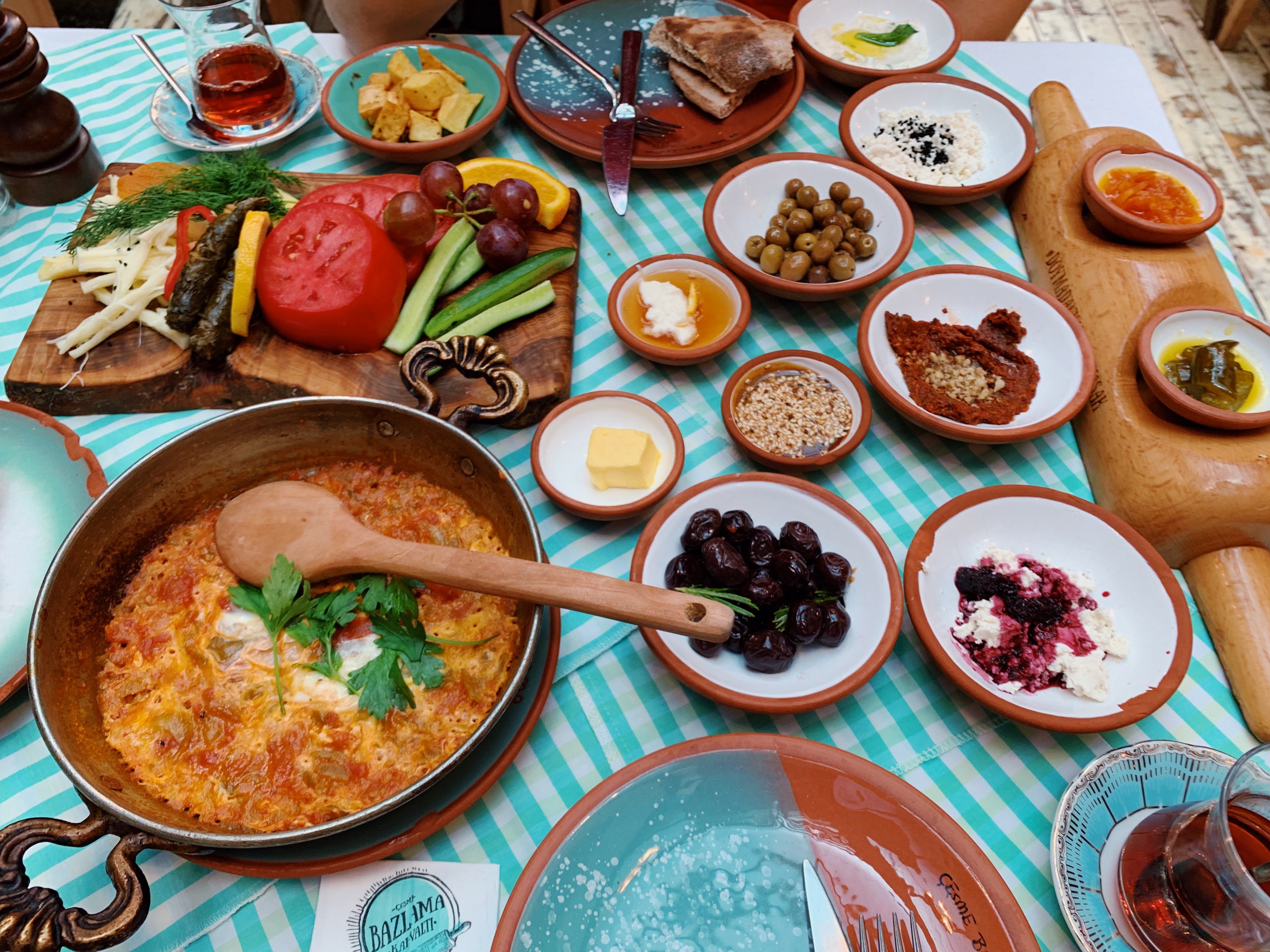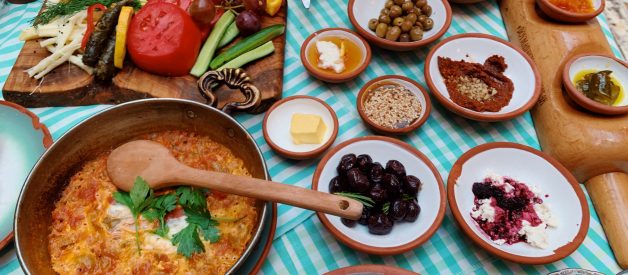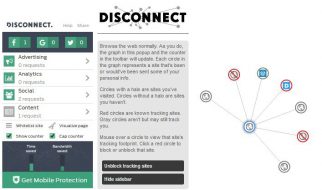And what makes little choices matter.
 Photo by Natalia Mok on Unsplash
Photo by Natalia Mok on Unsplash
I?ve been there. You?ve been there. We?ve all been there at some point or another. Picture this: It?s lunchtime at your office. You look up from your work to see if anyone else is about to make a move for lunch. A handful of regular lunch buddies get up and you decide to go along with them. As you all gather by the lobby waiting for the elevator to arrive, one of you throws out the question that leaves everyone in a cold sweat: ?So what?s for lunch?? or ?Where do we eat?? Everyone stands in silence, waiting for some else to answer but everyone is busy thinking, or at least faking it.
Why is it so hard to choose what to eat?
Economics can help to explain why we face such difficulties.
- We have limited resourcesBecause you only have a handful of resources to allocate (perhaps a modest lunch budget and a limited lunch break), you have to make a choice. Even if you were told you had an extravagant budget and a three-hour lunch, you would still be limited by how much you can eat. So you would still have to choose where or what you?d like to spend your time, money and stomach space on.
- We want to maximize valueWhen I say maximize value, I don?t necessarily mean bang for buck. If getting as much food for as cheap as possible is value to you then you?d narrow your options down to that. If eating healthy is the value you?re looking for, you?d omit out anything that wasn?t otherwise. Everyone can have different values to maximize that change over meals.
- We have saturation pointsThere is only so much of the same food you can keep eating before you get sick of it and the mere thought of having anymore actually lessens your hunger. Say you have decided that having sushi for lunch maximizes your value for eating healthy (sushi is healthy right? Right??). It falls within in your budget and is quick so you go there often. You might eventually reach a point where the thought of sushi is going to put you off because of how frequently you are having it. This will then cause you to seek another option that maximizes your value.
These three basic concepts can help us understand how and why we make certain decisions when it comes to choosing food. Take these three colleagues: John has just decided to start living a healthier lifestyle, so he is looking for healthy foods. Amy on the other hand has been eating healthy for a while now and is looking to loosen up and indulge with some cheap comfort foods. Thomas has been having Indian food for the last three days and wants to change it up. No more curries for Thomas, thank you.
If all three colleagues want to have lunch together but also maximize their value they would have to fulfill: healthy for John, cheap for Amy, and anything but Indian food for Thomas. This matrix of criteria gets more complicated as more people with different interests are added into the mix.
Because we like to be accommodating to those around us, we encounter the first obstacle to decision making: satisfying the interest of everyone.
Choices
Let?s say we miraculously manage to find a restaurant that satisfies all of the criteria above. John and the gang will now face the next problem: deciding specifically on what to eat.
After John and his colleagues are seated, the waitress hands them a rather large menu. It contains dishes from all over the world, cooked in different styles. A price range to fit any purse. Such an enormous selection! Surely everyone can find something for themselves! Minutes pass as the group silently read the menu. 5 minutes. The waitress comes up to the table to serve them water and asks if they are ready to order. The group looks up from the menu and then at each other silently. No one could decide what they wanted. ?Perhaps a couple more minutes then?? the waitress smiles before walking away.
What has happened here is called the Paradox of Choice.
We like to think that having a choice is a good thing. And it is.
The ability to choose gives the freedom to decide how best we should maximize our resources and our well-being.
Having no choice, on the other hand, is almost always worse than having some choice. Imagine trying to eat healthy but all that is available around you are fast-food chains. You won?t be very happy at all since you can?t maximize your value of eating healthy.
The other extreme is having way too many choices. Back to our healthy eating example. Imagine instead you had over 50 different healthy restaurants to choose from in your area. You would probably think ?This is great! Now I can eat healthy all the time!? What is probably going to happen is you are first going to look through the menu of all the restaurants to see what each one has to offer (maximizing value). Then, after looking through all of them you are either going to be paralyzed from cognition overload, or come to the conclusion that everything looks so good and you don?t know what to eat. In both cases, (most likely the latter), you can?t come to a decision.
Think of choices like spices: no spices make a bland dish, having some spices makes it great, but load it with as many spices as possible turns it into an inedible mess.
This is because we have a limited capacity to process vast amounts of information (especially when the waitress is standing next to you, waiting to take your order, maybe a little passive-aggressively). Under the constraints of limited time, we break down and become paralyzed trying to make a decision.
This is the second obstacle: the Paradox of Choice ? having too many options to choose from that we end up not choosing anything and feeling dissatisfied.
Thinking on your feet
If you think about it, your entire life can be summed up to a string of choices (both good and bad) that have led you to where you are right now. No doubt you know that there are many choices to make on any given day. If the paradox of choice holds, how then do you maneuver through the torrent choices you are faced with every day? Surely you?d be locked in place and unable to reach any decision with the amount of decision making we have to process?
Fortunately, we have developed mental tools to help us navigate our way through this ocean of decision making. They are called heuristics. Essentially, heuristics are mental shortcuts that allow us to very quickly and efficiently make decisions. This is why we can function without needing to stop and ponder about what our next decision is going to be.
Many types of heuristics are at play in any given day. Some of these include rules of thumb (a broadly accurate guide), and common sense (using good sense and judgment). Heuristics have also undoubtedly played a role in keeping us alive. Just saw a snake come out of dark hole in the ground? Probably should be more cautious around dark holes and not stick your hand in there (rule of thumb: dark hole in ground = danger).
One of these heuristics is social proof. Coined by Robert Cialdini in his 1984 book: Influence, the social proof heuristic says that when we are in a situation of uncertainty we look to the people around us to decide what to do next, assuming that they know better. This is most apparent when you are choosing between two places to eat. One of them is practically empty and the other is full of people with a line outside. In this case, your brain would probably process what you see as (empty restaurant = food no good, full restaurant = food good). So you go and join the line at the full restaurant, confident that your decision is the right one because so many other people have also chosen this restaurant.
As our technology and communication capabilities improved over time, so have our application of heuristics evolved. In the case of the social proof, we still depend on the knowledge and experience of other people to come to a decision. Only this time, we can depend on social media and online reviews to assist us in making a decision. Let?s go back to John and the gang and see how they are doing.
Food at last
The waitress had just left John?s table to serve another. Pressure was mounting to come up with an order before she next comes around. An idea pops into John?s head. He takes out his phone and goes into Instagram, types in the restaurant name and begins skimming through the pictures. Amy and Thomas had notice what John was doing and followed too.
After a brief skim on Instagram, the trio noticed that certain dishes were appearing more frequently than others. ?Those dishes must be good since they are so popular,? the group thought. Confident that they were making a good decision based on the proof they were looking at, John and the gang finally knew what they would like to order. A decision had been reached at last! Hurrah!
(Thomas, being the irrational human being that he is, decided to order the mutton curry because ?It looks so good in the pictures.? Damn it Thomas. You are going to feel that tomorrow.)
?
I know what you?re thinking. ?To solve what I want to eat I should go on Instagram and see what is posted the most? That?s the solution???
Well, yes and no.
If you are going to a new place that you?ve never been to before, then using social proof to aid your decision making is a great start.
But what about if you are always stuck with the same rotation of options? You?re an office worker with limited lunchtime and places to choose from. You?ve practically been to all of the restaurants and eateries and now you?re at a loss. What then?
The Saturation Dilemma
In economics speak, in the above situation, you have reached a point of utility maximization (enjoyment) for all your lunch options. At this stage, no matter which option you choose, you are going to experience either indifference or dissatisfaction (diminishing enjoyment), both not ideal feelings to get while spending your precious lunch break. So how do we deal with this problem?
I?m afraid to say that there is no one solution to solve this problem (if there is please link me the article!). The closest solution to this dilemma is to cycle through options long enough so you create a craving for a particular choice (resetting the saturation point). Though for some of you, this is not feasible as you have too few choices to cycle through.
The only other solution that I can conceive of this is to generate novelty long enough to reset the saturation point for your lunch options. Here?s why and how you might go about accomplishing that:
We love novelty. When a new restaurant pops up near your lunch area, you can guarantee that in the first few days of its opening it is going to be packed ? especially if it?s a familiar face that hasn?t been here before (like a McDonald?s for instance).
A change in the norm of our environment usually draws curiousity. Similarly, a novel change in our ritualistic lunch habits might improve our satisfaction (Oh look! A new place to eat!).
Here are some examples:
- Instead of eating out at random restaurants every day of the week for lunch, assign a theme to a day. Healthy Mondays, Taco Tuesdays, or Thai Food Thursdays for example. By having a theme already assigned to a day, it removes some cognitive load in deciding where to eat. Now all you need to think about is what to eat from the menu.
- Following the point above, make it a point to try something new from the menu. Do you always have the Thai Pineapple fried rice when you?re having Thai food? Why don?t you try out the Massaman Curry instead?
- Trying new things ?buys? you time to reset your saturation meters on the foods you usually eat. Plus, you might discover something else you would like to eat on a more regular basis.
- A more ?radical? and novel approach is to not eat out at all! Instead, consider banding with some colleagues or friends and make a potluck together. It?s a little more work than simply going out, but it is often cheaper and certainly more novel than the norm. You could each agree on a budget (preferably lower than what you spend eating out on average) and work from there to make a nice meal together.
- A philosophical approach is to be aware of your relationship with food. Is your day governed by the meal times ahead? Are you hungry when you go for lunch or do you simply follow along because that?s where everyone is going (social proof)? Perhaps view the lunch ritual as simply a means to fuel the remainder of your day and nothing more? Food for thought.
The core idea behind this is to create changes in your routine to keep things fresh. Repetition is excellent for cultivating habits, but very soul-crushing when it comes to food (first world problems ? aww man, Thai food for the third time in a row? My life is HARD).
Unless you are one of the people that can eat the same thing ad infinitum. In which case, you don?t have a problem here ? please move on to the next article. And now, if you would excuse me, I have to go and decide what to eat for dinner tonight.


